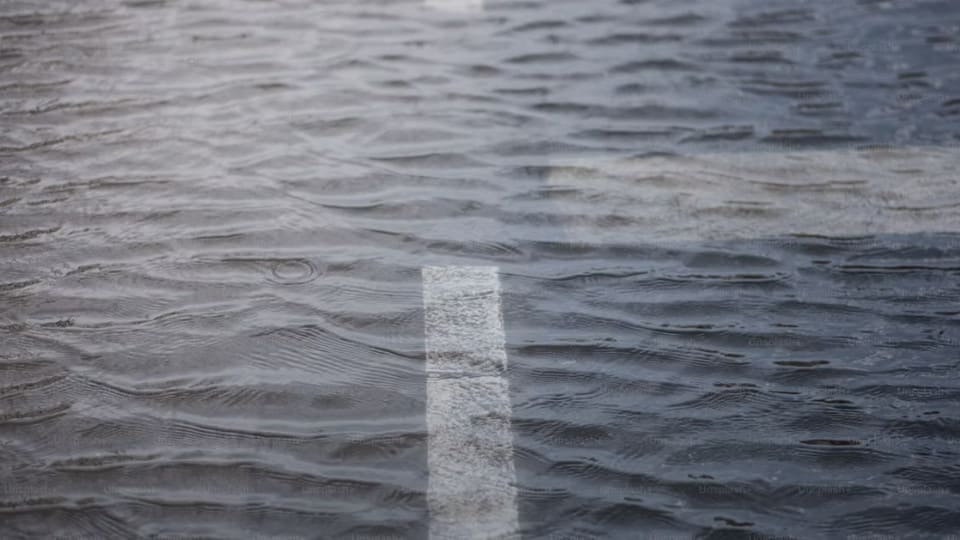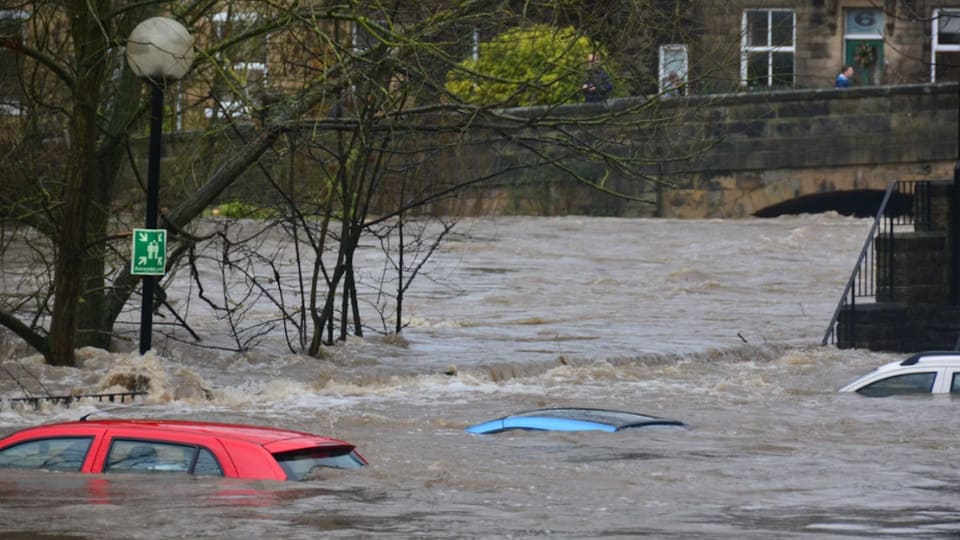Flooding in Cape Town Guide: Everything You Need to Know
Cape Town is prone to intense storms, with heavy rainfall overwhelming drainage systems. Floodwaters can quickly spill into streets, putting homes, vehicles, and even lives at risk.
Flooding in Cape Town is more than a headache—it’s dangerous. That’s why it’s important to notice the signs and know how to handle things when they happen.
This guide shows what flooding looks like in Cape Town and what steps to take once the water finally goes down. Keep reading to learn more!
Causes of Flooding in Cape Town
Flooding in Cape Town doesn’t usually come from one thing. They happen when a few problems pile up at the same time. Knowing these can help you spot trouble early and get ready. Here are seven main causes of flooding.
Extreme Weather and Surface Runoff
Heavy rainfall overwhelms drainage systems, while impermeable surfaces prevent water absorption, leading to rapid accumulation and urban flooding.
Steep terrain and urban basins increase the risk of sudden flash floods, which are difficult to predict and highly destructive.
River Overflow and Rising Groundwater
Prolonged rainfall causes rivers and estuaries to exceed their banks, potentially breaching levees and flooding adjacent areas.
In low-lying wetlands, saturated soil causes groundwater to rise to the surface, resulting in extensive inundation.
Coastal Storms and Seawater Intrusion
Cape Town’s coastal location leaves it vulnerable to storm surges, undersea seismic activity, and large waves, which can push seawater inland and flood coastal zones.
Inadequate Infrastructure and Building Design
Low-lying areas with poor drainage naturally collect runoff and may remain flooded for weeks.
Buildings lacking waterproofing or proper drainage systems are prone to indoor flooding and long-term water retention.

Which Flooded Areas in Cape Town Are and How to Check?
Floods in Cape Town often happen in the southwest winter, when the rain is heavy and storms are strong. Some places get hit harder than others, especially low-lying spots and areas close to rivers or the sea. The main areas include:
Cape Flats
Fat areas have poor drainage, high groundwater levels, and heavy winter rainfall. Residents in informal settlements or less sturdy housing here should be especially cautious and prepare for winter floods.
Near Rivers or Streams
These areas face rapid flash flooding as rainfall quickly raises water levels. Even moderate rain can cause streams to overflow with little warning, endangering nearby homes and roads within minutes.
Estuary Regions
Where rivers meet the sea, high tides and heavy rain combine to push water beyond safe levels. This slow but persistent flooding can affect residential zones for days with mixed salt-freshwater damage.
Coastal areas
Where rivers meet the sea, high tides and heavy rain combine to push water beyond safe levels. This slow but persistent flooding can affect residential zones for days with mixed salt-freshwater damage.
Note: If you're uncertain about your home's risk, it's wise to confirm with local authorities:
Call the public emergency number: 0214807700
Contact your community officials
Visit the Disaster Risk Management Centre
How to Stay Safe and Protect Your Home During Flooding in Cape Town?
When you see storms, heavy rain, rising rivers, or rough seas, it could be a sign that Cape Town weather flooding is on the way. Because no one can predict exactly when it will start, end, or how serious it will be, it’s best to get ready early.
Taking a few smart steps can help keep your family and home safe. Here’s a guide to follow.
Before Flooding
Read the Flood Safety Handbook
Available at the Cape Town Gov website—make sure every family member goes through it.
Create a Family Emergency Plan
Switch off all power, especially the main supply, and close gas valves.
Move valuables, like the documents, clothing, photos, money, jewelry, to the highest point of your home.
Clean sinks and bathtubs with disinfectant, then fill them with fresh water.
Bring outdoor items inside and secure them.
Designate an out-of-town relative or friend as an emergency contact and ensure everyone memorizes their details.
Teach children how to switch off power, gas, and water, and how to call emergency services or utility hotlines.
Plan and Practice Evacuation
Learn the warning signs of flooding and identify multiple safe routes.
Prepare Supplies
Flashlights and spare batteries
Portable radio for updates
First aid kit with medicine, disinfectant, bandages, etc.
Emergency food and bottled water
Cash, bank cards, mobile phone
Strong shoes and dry clothing
Basic repair tools, like the nails, hammer, saw, crowbar, wood planks, sandbags, plastic sheeting
If flooding causes a power outage, having a backup power solution is crucial. Setting up a home backup battery system helps keep lights, phones, and essential devices running.
The EcoFlow DELTA Pro 3 Portable Power Station is a great choice. With 4000W output and expandable capacity up to 48kWh, it can power fridges, medical equipment, or even an entire home for days, ensuring reliable backup when the grid fails.
EcoFlow DELTA Pro 3 Portable Power Station
During Flooding
Do Not Drive Through Floodwaters
Stay away from flooded roads—you could be trapped.
Avoid crossing any waterlogged areas, even shallow ones.
If your car stalls in water, exit quickly before rising levels trap you inside.
Monitor Official Updates
Follow news reports for the latest conditions
Leave immediately if authorities issue evacuation orders
Evacuate Safely
Avoid walking through floodwaters
Stay away from collapsed buildings and downed power lines
If water has entered your home, move to the highest level and wait for rescue
Do not attempt to swim across flooded areas
If outdoors, remain on higher ground

What to Do After the Floodwaters Recede?
When the water finally goes down, it doesn't mean the risk is gone. Floods leave behind damage and hidden dangers. If you’ve had flooding in Cape Town, here are a few things to keep in mind:
Do not return home unless authorities say it's safe.
Once back, check in on vulnerable neighbors like infants or the elderly.
Call your flood insurance company to report damage.
Before entering, inspect the exterior and foundation for cracks or collapse risks. Never use open flames—stick to flashlights.
Inside, keep the power off until a professional checks the wiring. Discard contaminated food, drinks, or medicine. Watch out for mud, nails, or broken glass. Boil water and food until confirmed safe.
Note: If you suspect leaks in gas, pipes, or damaged circuits, call professionals instead of fixing it yourself.
Conclusion
Flooding in Cape Town can happen quickly and leave a big mess behind, but being prepared makes it easier to handle. Knowing what causes floods, which areas are at risk, and what to do before, during, and after heavy storms helps you stay ready when the water rises.
Keep some emergency supplies close, follow local updates, and make sure you know safe ways out if you need to leave. Power cuts are common during floods, so having a backup is important. An EcoFlow portable power station gives you steady power when the grid goes down.
FAQs
How to report flooding?
If you notice flooding, your first priority is to stay safe and keep away from the water. Once you’re in a secure spot, report the floods in Cape Town today to your local municipality or disaster management center right away.
Phone: 021 444 8197
Email: amanda.munnik@capetown.gov.za
You can also call the city’s emergency hotline at 021 480 7700, check official websites, or reach out through social media channels.
Be specific—share your location, the scale of flooding, and any immediate risks. Clear, accurate details help authorities respond faster and more effectively.
What resources are needed in a flood?
During a flood, basic survival and safety items matter most.
You’ll need clean drinking water, non-perishable food, flashlights with spare batteries, and a first-aid kit. A portable radio is useful to stay updated on official alerts, and extra clothing and sturdy shoes help if you need to evacuate.
Keeping power banks or a portable power station ready ensures your phone and essential devices stay charged. These resources can make a big difference while you wait for rescue or until conditions improve.
What is the best action when driving through a flooded road?
The very best action is not to drive through it at all.
Floodwater may look shallow, but it can hide sinkholes, floating debris, or strong currents that sweep cars away dangerously fast. If your vehicle stalls in rising water, leave it immediately and move to higher ground before the doors become impossible to open.
Always choose an alternate safe route or wait until authorities confirm the road is safe again. Remember, no destination is ever worth risking your precious life in dangerous flood conditions.